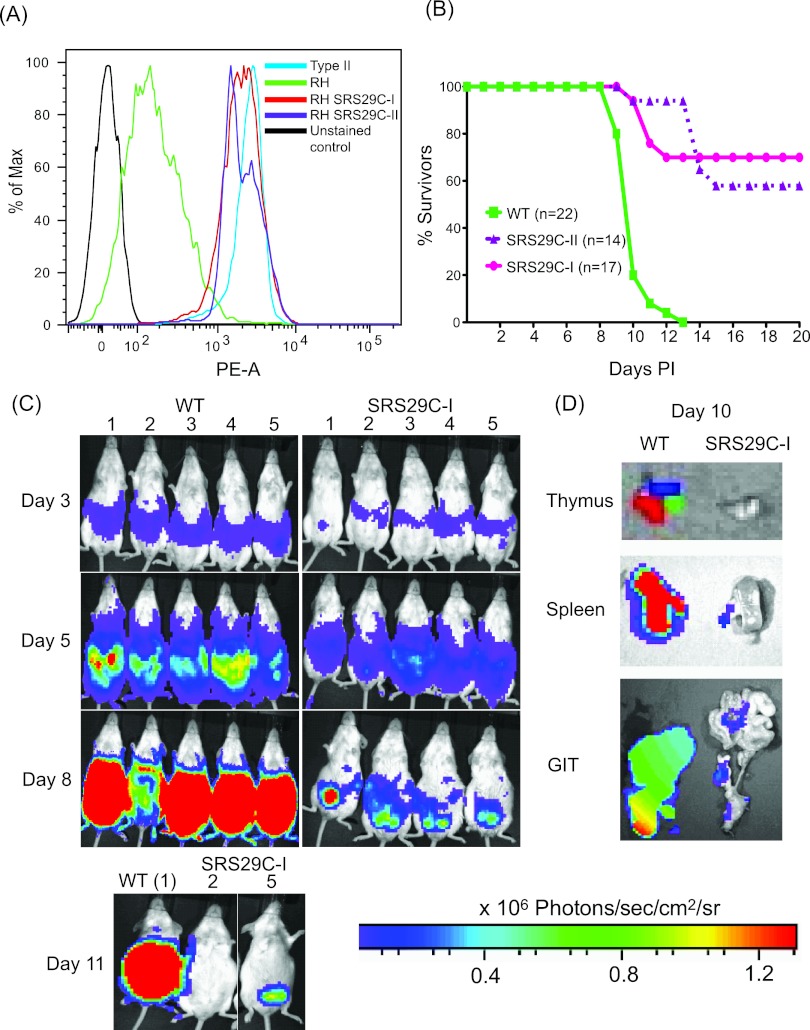FIG 7.
Transoverexpression of SRS29C is sufficient to attenuate acute virulence in mice. (A) Flow cytometric analysis of SRS29C surface expression in transgenic clones overexpressing type II (SRS29C-II) and type I (SRS29C-I) alleles. Endogenous SRS29C expression levels for type I (RH) and type II (Me49) are shown for comparison. Unstained control refers to staining without a primary antibody. (B) Effect of SRS29C overexpression on acute virulence in mice. Infection with SRS29C-I or SRS29C-II parasites resulted in significantly lower mortality than that caused by the WT. The number of seropositive mice infected with WT strain 22 was 17 for SRS29C-I and 14 for SRS29C-II. The total infectious dose for all experiments was 50 parasites. Mortality data are a composite of six independent experiments by using independently derived transgenic clones (two for SRS29C-I, one for SRS29C-II) and the WT parent. (C) Bioluminescent detection of parasite burdens and dissemination in vivo. CD-1 mice infected with 50 luciferase-positive WT or SRS29C-I parasites and imaged daily. Representative images with photon output intensity in photons/second/cm2/surface radiance (sr) are shown for days 3, 5, 8, and 11. The minimum number of photons was set at 3,932, and the maximum was set at 1.3 × 106. To control for background luminescence on days 8 and 11, the minimum was set at 2 × 105. (D) BLI of luciferase-positive parasites in ex vivo organs. Spleens, gastrointestinal tracts (GIT), and thymuses from mice sacrificed on day 10 were imaged ex vivo to quantify parasite burdens.

